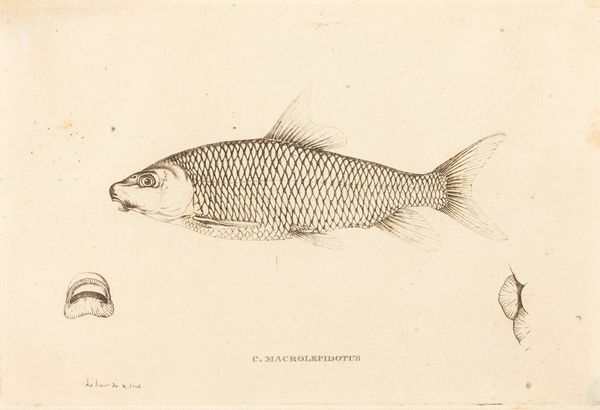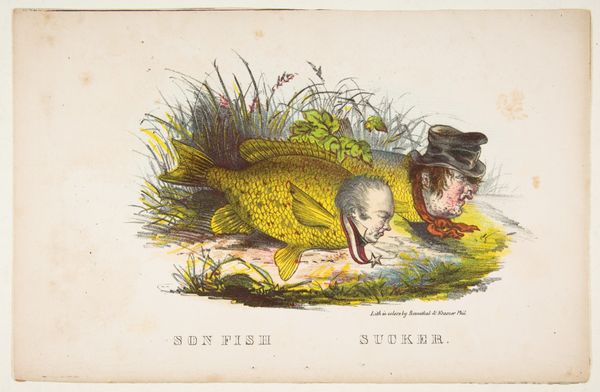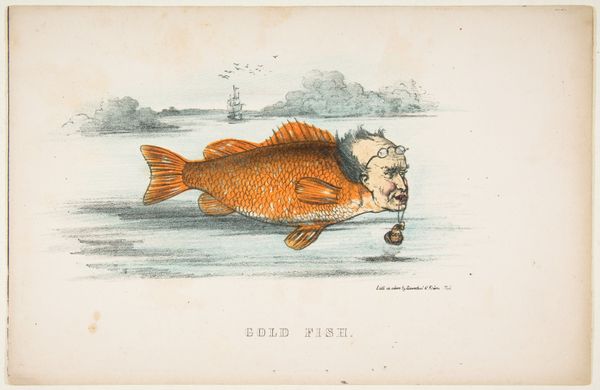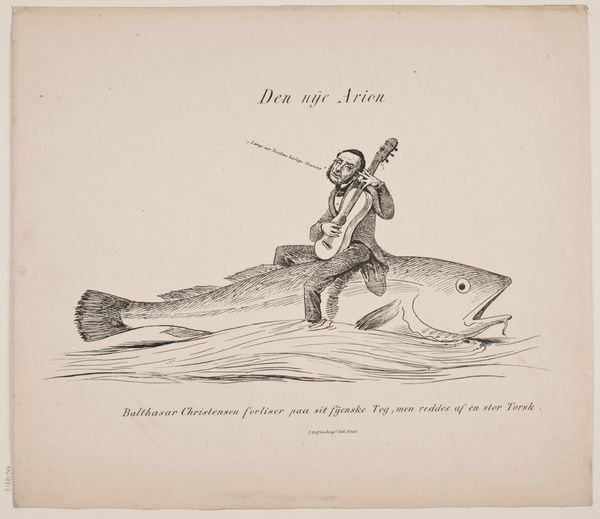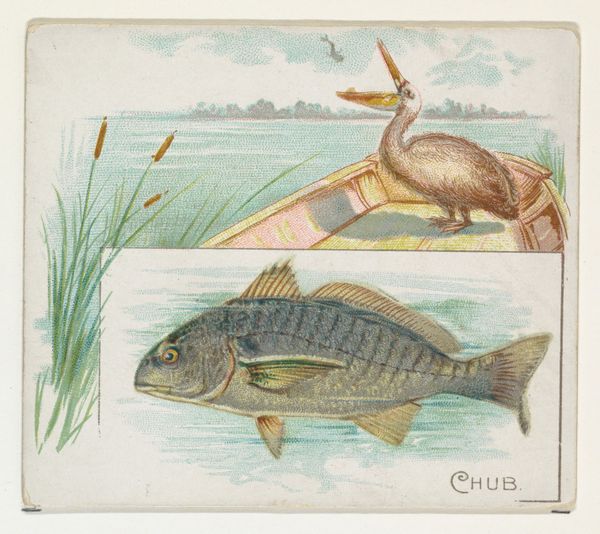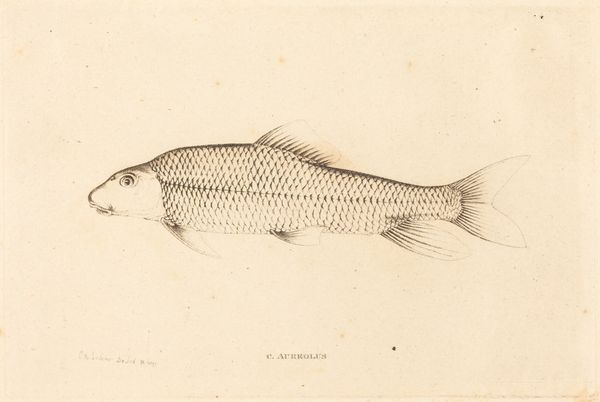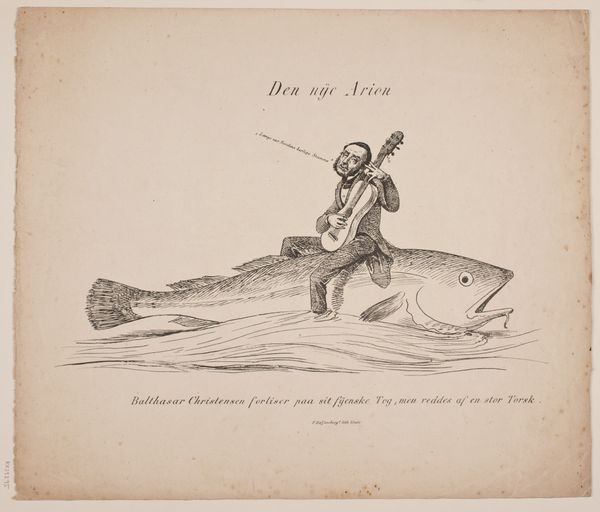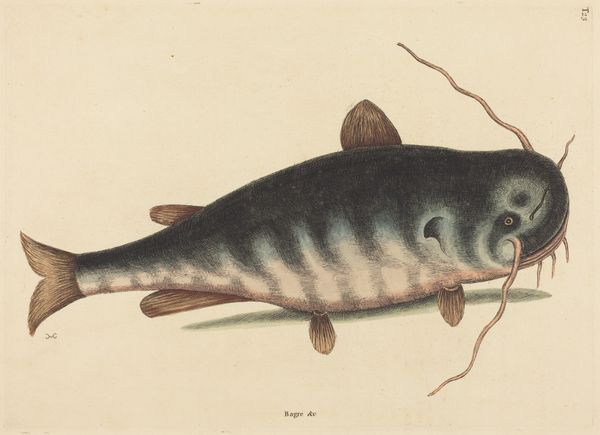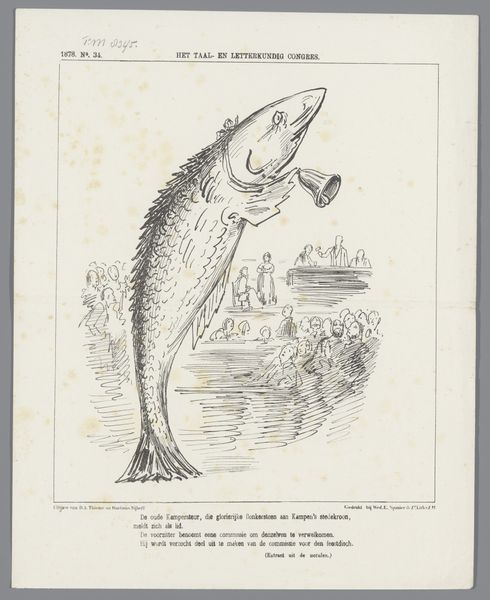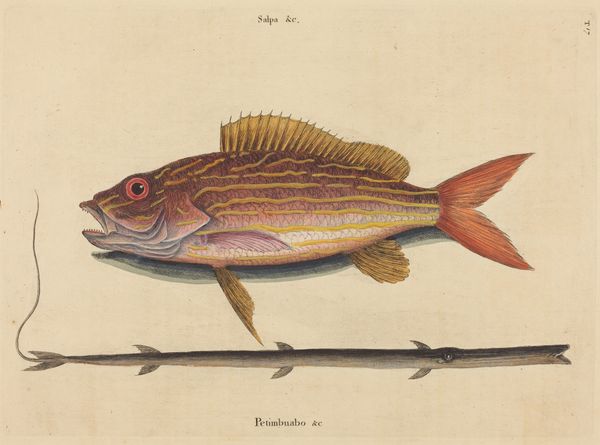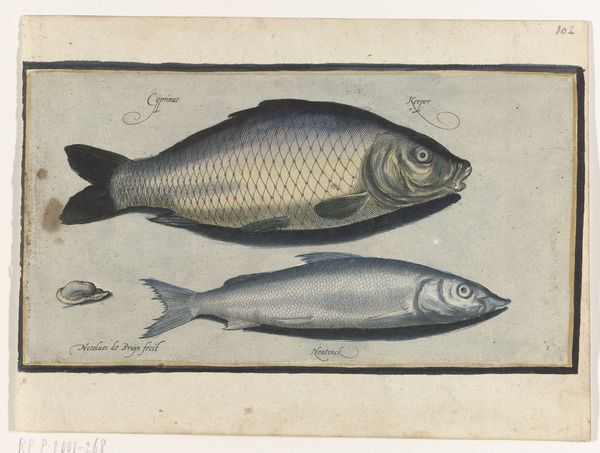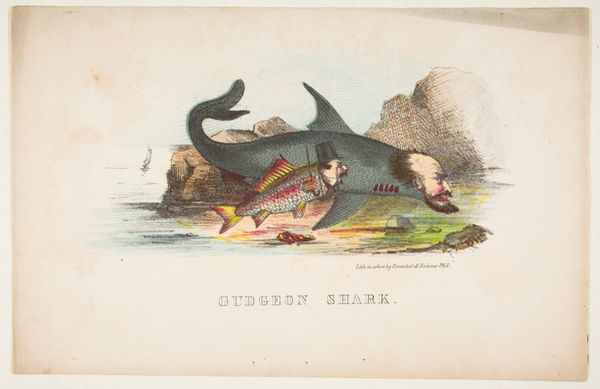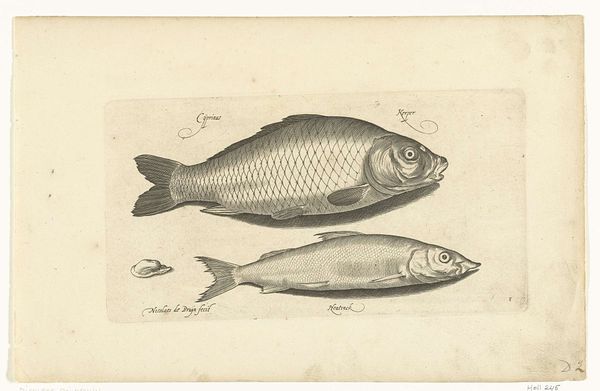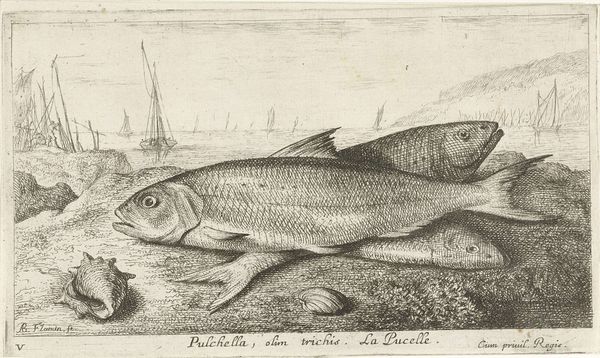
Old Shad & Young, from The Comic Natural History of the Human Race 1851
0:00
0:00
drawing, lithograph, print
#
drawing
#
16_19th-century
#
lithograph
# print
#
caricature
#
figuration
#
coloured pencil
#
comic
#
watercolour bleed
#
watercolour illustration
#
genre-painting
Dimensions: sheet: 7 3/16 x 11 in. (18.2 x 28 cm)
Copyright: Public Domain
Curator: I find this piece absolutely absurd and yet wonderfully telling of its time! The lithograph we're looking at is entitled "Old Shad & Young, from The Comic Natural History of the Human Race" created in 1851 by Henry Louis Stephens. Editor: It's so strange. At first glance, it reads like some sort of bizarre fairytale illustration. I'm immediately struck by the absurdity of the hybrid creatures – men with fish bodies swimming in what appears to be a river or lake. Curator: Stephens' work is rife with social commentary, and in this case, it points directly to hierarchical relationships and the burden of inheritance, situating identity, particularly familial legacy, within the context of exploitation. Editor: Interesting! My mind immediately went to the question of printing—the physical lithographic process to make this comic, this piece that has the feel of mass-produced, consumed imagery from the 19th Century, but meant for who? Was this for the bourgeois eye and making fun of working classes? Or poking fun at elites? I’d love to look at who was distributing and buying prints like these at that time. Curator: Exactly! Because Stephens published regularly in publications like "Punch," we need to remember this as an inherently political satire that touches on contemporary cultural expectations—perhaps a commentary on patriarchal power dynamics, or class consciousness filtered through social Darwinism. The larger fish, seemingly an older gentleman, towing along a smaller, younger one—is this how society felt the pressure of expectations, from the older generation weighing the younger down? Editor: I do love thinking about that tension between production, consumption, and cultural critique! Thinking about Stephens' practice and how many hands his art passed through makes the message so much more nuanced. Even the technique, lithography – how the ease of replication democratizes the image, allowing for wider distribution but also risking dilution of the message. Curator: I agree; by looking at Stephens and the work, in a critical fashion, it raises important questions about visual rhetoric and how meaning is produced through stereotypes and satire. Ultimately, his lithograph compels us to delve into the convoluted network of meaning woven into every print. Editor: And I’d push it even further! This image and art is not a unique, genius object—rather, art as a byproduct of specific means, resources, and contexts—a view that complicates authorship but reveals hidden socio-economic networks. So fascinating!
Comments
No comments
Be the first to comment and join the conversation on the ultimate creative platform.
